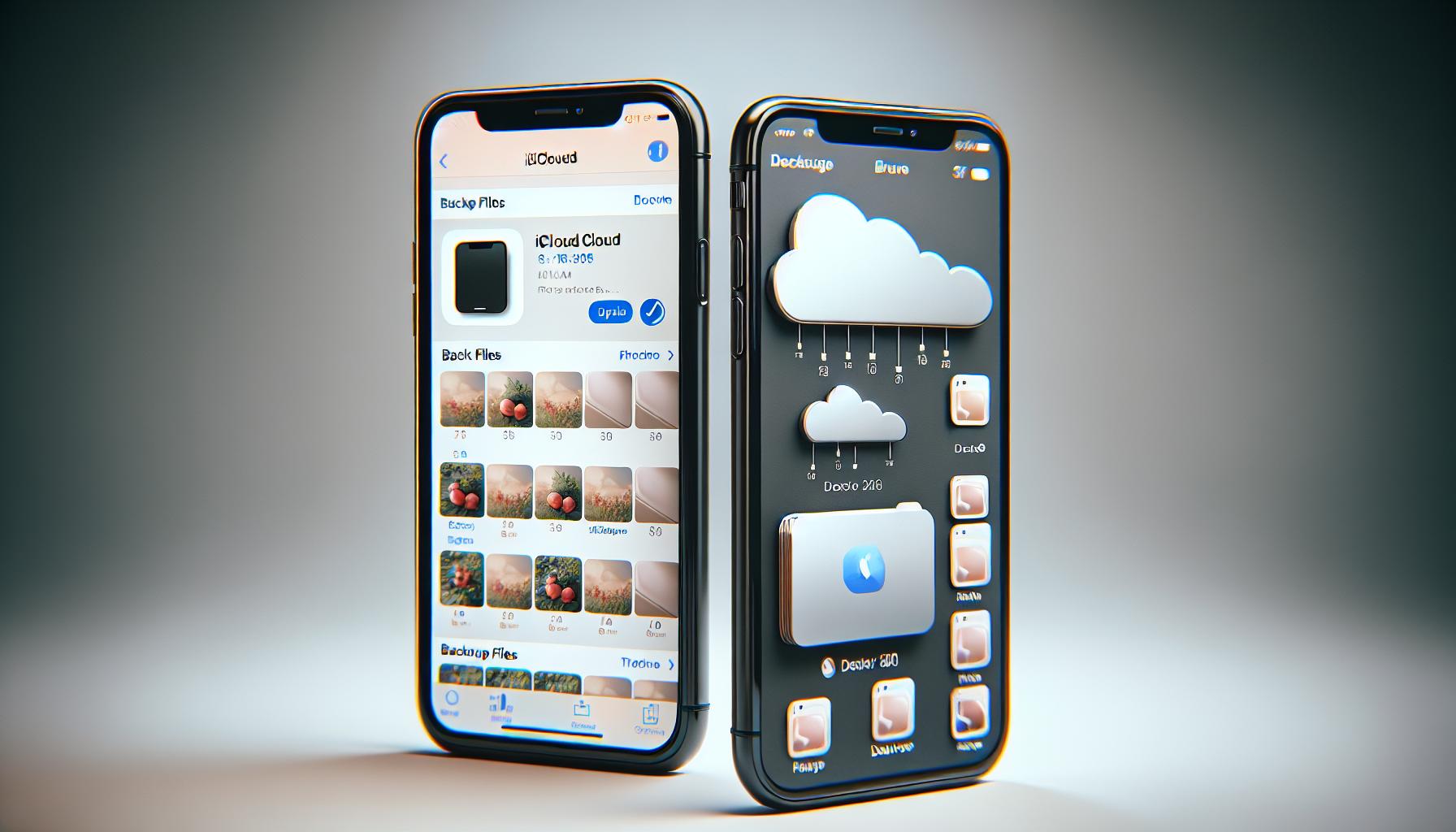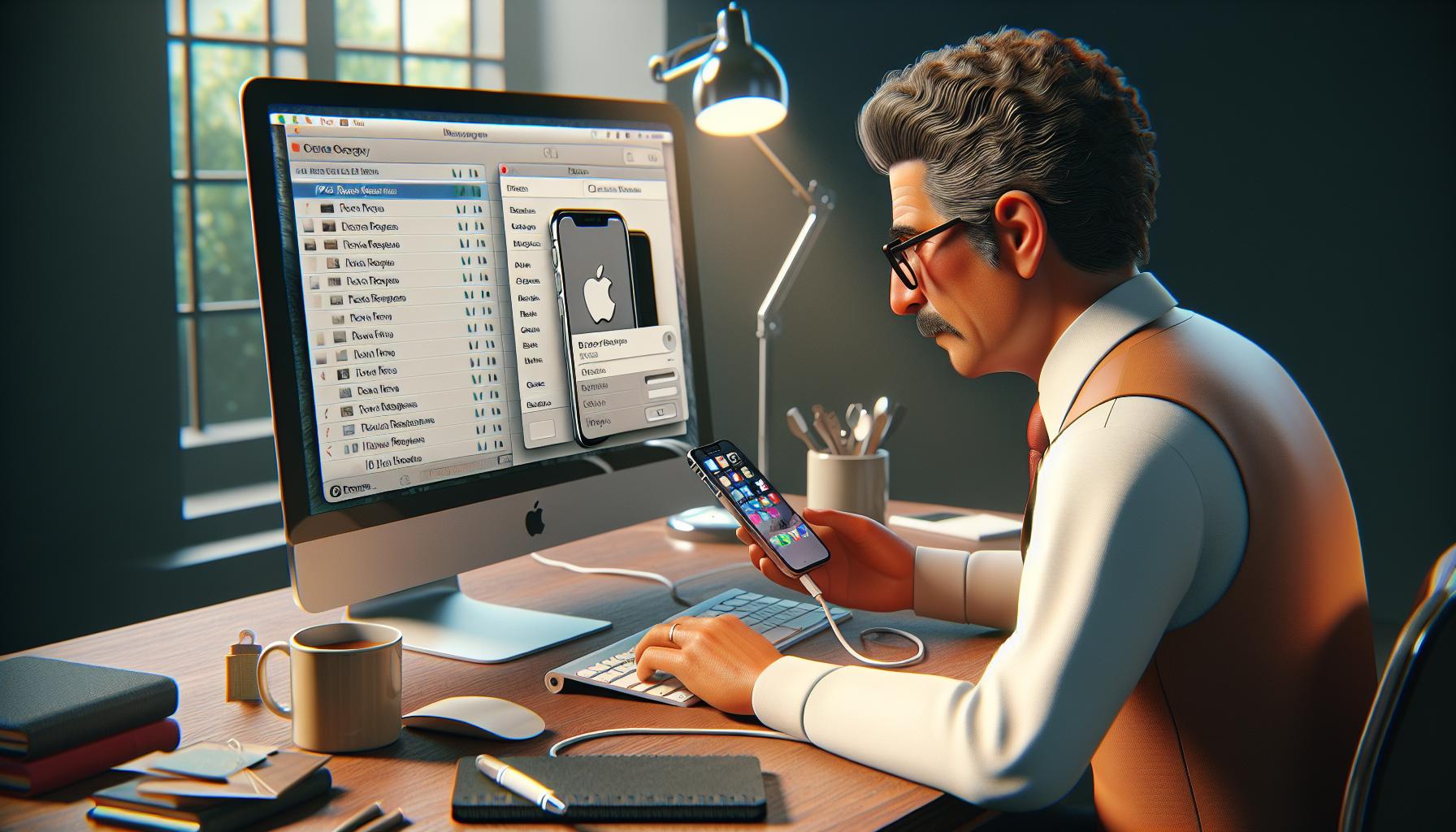Ever accidentally hit 'delete' on a cherished photo on your iPhone and felt that pang of regret? You're not alone. It's a common scenario that can leave you frantically searching for ways to recover those lost memories.
Luckily, there's good news. You'll be relieved to know that recovering permanently deleted photos from your iPhone isn't as hard as it sounds. With the right tools and a little know-how, you can retrieve those precious moments in no time.
Understanding Permanent Deletion on iPhone
The term permanent deletion can appear quite daunting—almost like your precious photos have disappeared into a black hole. But rest assured, it's not as final as you might think. Before diving head-first into recovery options, it's beneficial to understand what exactly happens when you permanently delete a photo on your iPhone.
When you first delete a photo on your iPhone, it automatically moves to a folder labeled Recently Deleted. These images aren't truly 'deleted' at this point. They're tucked away in a sort of digital limbo within your device. For the next 30 days, these photos linger in the Recently Deleted folder, giving you an ability to recover them with just a few taps.
But here comes the question, what happens if you clear out the Recently Deleted folder or those 30 days pass? This is the point when the deletion becomes, in theory, permanent. However, it's important to note that 'permanent' in digital terms is somewhat relative.
Here's the kicker: even after a photo is permanently deleted, it's not immediately wipe out from the iPhone's storage. Instead, the space that the photo occupied is marked as usable for fresh data. Until new data overwrites that space, the 'deleted' photo is still retrievably buried in your phone's digital depths.
Now you may wonder, why doesn't iPhone just delete the data right away? It all comes down to how digital storage works. Erasing data outright takes more energy and power. Instead, the space is simply earmarked, ready to be used later. This unique strategy of storage management is actually your best ally in photo recovery.
In addition, the importance of acting quickly cannot be overstated. The longer a picture remains deleted, the higher the chance it gets overwritten by new data. Hence, if you accidentally delete a photo, immediate action decreases the risk of permanent loss.
Next Steps: Tools You'll Need to Recover Permanently Deleted Photos
The deeper ins and outs of iOS data management may sound like tech jargon, but they're really crucial. Understanding them makes you well-prepared for the process of photo recovery...
Backup Options for iPhone Photos

After understanding how iOS manages data, let's move forward to discuss safeguarding your moments captured on your iPhone which can be accomplished via routine backups. Backup systems are an essential safety net for your cache of photos. They help prevent permanent loss in the event of accidental deletions or unforeseeable device issues.
Apple offers you two primary backup options: iCloud and iTunes.
iCloud
iCloud, a cloud-based storage service, is an excellent backup option that constantly syncs with your device when connected to the Internet. With an Apple ID and an Internet connection, you gain access to 5GB of free storage. Want more space? You'll need to opt for a paid plan depending on your storage needs. iCloud creates backups of your photos, accounts, documents, Health data, Home configuration, and settings. It's the ideal backup choice if convenience and constant accessibility are paramount to you.
But there's an additional benefit to backing up to iCloud. Say you've permanently deleted some photos. Remember, until new data overwrites them, there's a chance of recovery. That's where iCloud Photo Library comes in. If you had this feature enabled before the deletion, you could retrieve your photos from the recently deleted folder in your iCloud account.
iTunes
For those who'd prefer to avoid cloud storage or subscription fees, iTunes is the next best option for you. Once your iPhone is plugged into your computer, you can manually initiate the backup process with a few clicks. It's important to note that iTunes doesn't offer a recovery option like iCloud. Therefore, this method is best if your end goal is simply to backup and protect your photo collection from loss.
Your 'Photos' app also serves as an additional safety net on your device. Remember when we talked about the case of accidental deletion? The 'Recently Deleted' folder in the 'Photos' app holds deleted images for 30 days, giving you a buffer period for recovery.
So, you've got options to safeguard those precious moments and decrease the risk of permanent loss. Next, we'll delve into how to recover permanently deleted photos using various techniques, keeping in mind your iPhone's data management process.
Using iCloud Photos to Recover Deleted Photos
When we're tackling the problem of recovering permanently deleted photos on your iPhone, iCloud Photos plays a pivotal role. It's a blessing in disguise that allows you to restore your precious moments with a few simple steps.
Remember how we touched on the fact that iCloud syncs constantly with your device? This agreement between your iPhone and iCloud is where the magic starts. The moment a photo is deleted on your iPhone, it also disappears from iCloud Photos. But here's the catch - iCloud has a recently deleted folder that holds onto your deleted photos for 30 days.
Let's guide you through the process of using iCloud Photos for photo recovery.
- Firstly, make sure you're signed in with your Apple ID on icloud.com. Then, navigate to Photos.
- Do you see Photos at the top of your screen? Click on it, and you'll see the Recently Deleted album.
- Inside this album, you'll find your deleted photos. If you just deleted them, they'll probably be humming right at the top. Click on the photo/s that you want to recover.
- After selecting the photo or photos, click Recover.
Voila! Save some room in your heart, because the moments you thought you'd lost are all back. In the blink of an eye, iCloud Photos has reversed what seemed like an irreversible process. However, if you wait longer than the 30-day grace period, the recovery of your photos will be out of question. So, act fast. It's also worth mentioning that iCloud Photos is available only to those who've switched from My Photo Stream to iCloud Photos.
Let's move on to another method of photo recovery on your iPhone - using third-party software. These solutions come in handy in cases where iCloud Photos or the Recently Deleted album can't seep to the rescue.
Using iTunes Backup to Restore Deleted Photos
Moving beyond iCloud Photos, let's delve into the process of using iTunes Backup for photo recovery. This avenue relies heavily on the assumption that you've previously created a backup of your iPhone on iTunes. If you haven't, it's advisable to get into the habit of regular backups. This practice can turn out to be a lifesaver!
iTunes backups don't have any time restriction like the 30-day period with iCloud Photos. As long as you've got a relevant backup, you can retrieve your deleted photos. So, how do you undertake this recovery process through iTunes Backup?
Before diving into the steps, remember to turn off the 'Find My iPhone' feature on your device. This is a mandatory step for restoration from iTunes. Here's how you can achieve that:
- On your iPhone, visit 'Settings'
- Tap on your name at the top
- Click on 'Find My'
- Tap 'Find My iPhone'
- Finally, switch the toggle to off position
Onto retrieving the photos:
- Launch iTunes on your Mac or PC
- Connect your iPhone to your computer
- Click on the device icon that pops up on the top left
- Hit 'Restore Backup'
- Choose the backup you want to restore from
- Click 'Restore' and hold tight!
It's important to note that this approach overwrites the current data on your iPhone with the data stored in the backup. So, you're not just getting your photos back, your device is reverting to the state it was in when the backup was made.
Recovering Permanently Deleted Photos with a Third-Party Software

Expanding on previous information, third-party software offers another solution for recovering deleted photos. Several applications provide this service, such as Dr.Fone, iMobie PhoneRescue, and Enigma Recovery, each with unique features that bring lost memories back to life.
Before you delve into using any third-party software, it's essential to evaluate its credibility. Ensure it's a trusted brand, used and recommended by professionals.
Dr. Fone is a popular choice among users due to its ease of use. It allows you to selectively retrieve data, preview your lost files before recovery, and does not require a backup. Here's how to use it:
- Download and Install Dr.Fone on your computer.
- Launch the program and select 'Data Recovery'.
- Connect your iPhone to the computer.
- Check 'Existing & Deleted Data' or 'Deleted Data'. Then select 'Start Scan'.
- Once the scan ends, preview files and select photos for recovery.
- Click 'Recover to Device' or 'Recover to Computer'.
Another worthy nominee is iMobie PhoneRescue. Apart from photo recovery capabilities, it helps in fixing common iOS problems, recovering messages, contacts, and more.
Here's a mini-tutorial on using iMobie PhoneRescue:
- Download and open iMobie PhoneRescue.
- Choose 'Recover from iOS Device'.
- Select categories you want to recover, then click 'OK'.
- After scan results appear, choose your photos, then click 'To Device' or 'To Computer'.
Finally, there's Enigma Recovery. It offers a balance of data recovery solutions, including the ability to restore deleted messages, contacts, call history, and of course, photos.
Following these steps will ensure successful use of Enigma Recovery:
- Install Enigma Recovery software on your computer.
- Connect your iPhone and Select 'Recover from my iOS device'.
- Click 'Start scan' and wait patiently.
- Once the data is scanned, select the photos you wish to reclaim.
- Click 'Export & Restore', then 'Restore to device' or 'Export to desktop'.
Tips to Prevent Permanent Deletion of Photos on iPhone

Now that you're well-versed in how to recover deleted photos using third-party software like Dr.Fone, iMobie PhoneRescue, and Enigma Recovery, let's pivot towards prevention. After all, it's better to safeguard your precious memories from permanent deletion from the get-go, isn't it?
Start by making a habit of regularly backing up your photos. It doesn't have to be a chore. With iPhone's inbuilt iCloud feature, you can easily set it up to automatically back up your photos and videos. Just navigate through settings -> [your name] -> iCloud -> iCloud Backup and switch the toggle on.
Next, be cautious while deleting photos. iPhones have a built-in 'Recently Deleted' album that houses your deleted images for 30 days before they're permanently deleted. When trimming down your photo library, be sure to only delete images from this album if you are certain you no longer need them.
Manage disk space wisely. Regularly offload unnecessary data and apps via settings -> General -> iPhone Storage. Using storage effectively prevents unwanted deletes due to low storage. Keep your iPhone working smoothly while retaining all your precious memories.
Lastly, consider using photo-sharing apps like Google Photos or Dropbox that offer cloud storage. Backup your media on these platforms and rest easy knowing your photos are just a few clicks away.
Following these tips should significantly reduce the risk of permanent photo loss. Remember, prevention is better than cure. Taking these steps now could save you a lot of heartache down the line.
Stay tuned with us for more such insightful walkthroughs to make your iPhone use an absolute breeze.
Conclusion
Now you've got the know-how to recover those precious photos that seemed lost forever. Remember, prevention is key. Regular iCloud backups, careful management of your 'Recently Deleted' album, and effective disk space usage are your best friends in avoiding permanent photo loss. Using photo-sharing apps for cloud storage can also provide an extra layer of protection. It's your memories we're talking about here, so it's worth taking these precautions. With these tips, you can keep your photo memories safe and sound on your iPhone.
Frequently Asked Questions
Q1: How can I avoid permanent deletion of photos on my iPhone?
To avoid permanent deletion of photos on your iPhone, regular backup using iCloud is advised. This will help you retrieve your photos anytime you need them.
Q2: What precautions should I take while deleting photos from the "Recently Deleted" album?
Be very cautious while deleting photos from the "Recently Deleted" album. Once deleted from this album, recovering these photos might not be possible.
Q3: How can effective disk space management help prevent permanent photo loss?
Effective disk space management ensures you don't run out of space, and get forced to delete precious photos. Regularly freeing up storage can prevent needing to permanently delete photos.
Q4: Can photo-sharing apps help with cloud storage and prevent photo deletion?
Yes, certain photo-sharing apps also provide cloud storage services. By storing photos in the app's cloud, permanent deletion from the device doesn't mean losing the photo.




